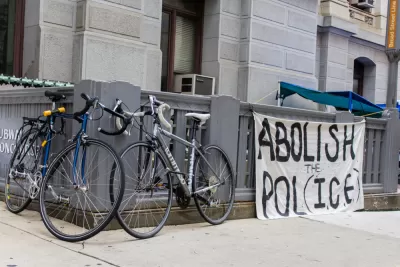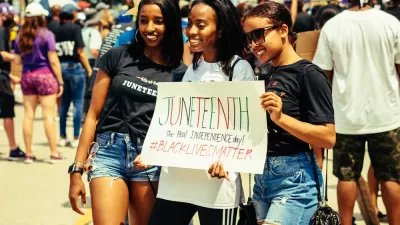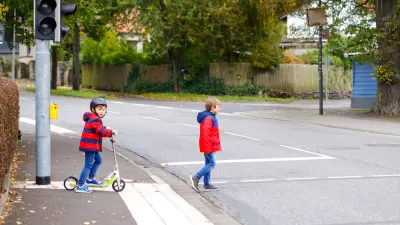Abolition—as a mode of mobilization and social change directed at the criminal legal system and elsewhere—remains widely misunderstood.

It’s hard to overstate the transformation in the politics of public safety over the course of 2020. After the murder of George Floyd and corresponding uprising in Minneapolis, a nationwide movement of unprecedented scale arose to grieve and to resist anti-Black racism. The Overton window on policing shifted rapidly: community-based accountability and notions of #CareNotCops entered the mainstream as credible alternatives to incarceration, and centrist leaders once content with criminal justice reform began to speak of defunding and even abolishing the police. The groundswell in the streets turned the tide in halls of power. Long-standing demands to identify and uproot the carceral state’s connections to chattel slavery are finally being heard and heeded.
This kind of sea change is overdue in housing policy, where incremental, rather than transformative, approaches have traditionally been the norm despite visionary contributions from housing activists. The exigencies of 2020 require a bold, new course. Both the severity of pandemic-spurred rental arrears and the might and potential of the Movement for Black Lives urge a different way forward. As we argue in a new paper, the movements for prison and police abolition offer vital lessons for housing justice.
Linking Abolition and Housing Justice
Engaging with abolitionism would first entail envisioning what housing justice would look like in abolition democracy. The voices of residents and of grassroots movements should be central to this vision, but we might imagine that housing justice encompasses, at minimum, ample safe and affordable housing; abundant wealth-building opportunities for Black households and communities; and a severing of the link between geography and opportunity. Abolition then asks what foundational conditions are necessary to make such a world possible and suggests that we should direct resources toward those ends. Research documenting the conditions of “high-opportunity” neighborhoods—today inhabited primarily by affluent white households—is instructive here. Access to food, jobs, and health care; well-resourced schools and libraries; and parks and green spaces can be foundational conditions for housing justice. Going deeper, we might imagine that such a world also requires investment in services that would address the root causes of or otherwise provide meaningful treatment for substance abuse, domestic violence, and mental health concerns.
Abolition is, in the words of scholar and activist Angela Davis, “not only, or not even primarily . . . a negative process of tearing down.” Nevertheless, abolition also compels us to imagine the obsolescence of institutions that fail to serve their designated purpose, prove resistant to reform, and perpetuate oppression. Just as prison and police abolitionists operate in pursuit of a world in which prisons and police are not only nonexistent but obsolete, we might ask: What would it take to make eviction, emergency shelter, or similar institutions unnecessary?
Consider, for example, housing court through an abolitionist lens. In theory a forum in which landlords and tenants can each vindicate their rights, housing courts instead . . .
FULL STORY: What’s Abolitionist Housing Policy?

Maui's Vacation Rental Debate Turns Ugly
Verbal attacks, misinformation campaigns and fistfights plague a high-stakes debate to convert thousands of vacation rentals into long-term housing.

Planetizen Federal Action Tracker
A weekly monitor of how Trump’s orders and actions are impacting planners and planning in America.

In Urban Planning, AI Prompting Could be the New Design Thinking
Creativity has long been key to great urban design. What if we see AI as our new creative partner?

King County Supportive Housing Program Offers Hope for Unhoused Residents
The county is taking a ‘Housing First’ approach that prioritizes getting people into housing, then offering wraparound supportive services.

Researchers Use AI to Get Clearer Picture of US Housing
Analysts are using artificial intelligence to supercharge their research by allowing them to comb through data faster. Though these AI tools can be error prone, they save time and housing researchers are optimistic about the future.

Making Shared Micromobility More Inclusive
Cities and shared mobility system operators can do more to include people with disabilities in planning and operations, per a new report.
Urban Design for Planners 1: Software Tools
This six-course series explores essential urban design concepts using open source software and equips planners with the tools they need to participate fully in the urban design process.
Planning for Universal Design
Learn the tools for implementing Universal Design in planning regulations.
planning NEXT
Appalachian Highlands Housing Partners
Mpact (founded as Rail~Volution)
City of Camden Redevelopment Agency
City of Astoria
City of Portland
City of Laramie





























